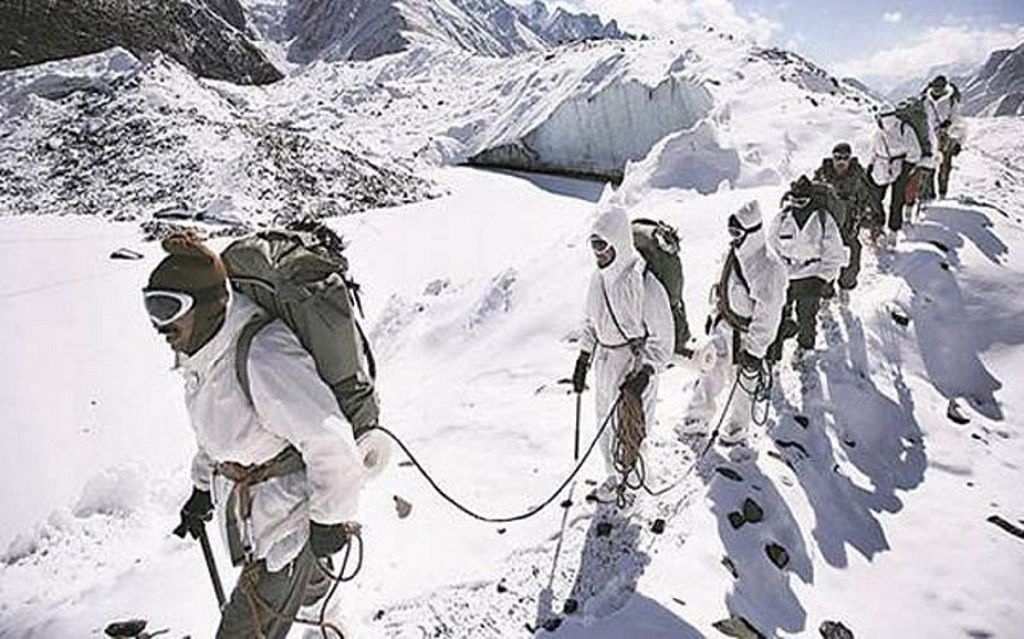New Delhi: Seventy four Army personnel have died due to avalanches in the past three years. This number has once again put the spotlight back on difficulties faced by the Indian Army in mitigating the disaster and rescue operations in high-altitude areas.
Defence Minister Rajnath Singh had Wednesday told the Parliament that 16 Army personnel were killed until 1 December this year. On 4 December, four others had died — two in the Tangdhar sector of Kupwara and one at Kashmir’s Gurez sector. This took the toll to 20.
In 2016, there were 18 Army casualties because of avalanches, while in 2017, the number of deaths were 30. There were six deaths in 2018, said Singh.
Weather conditions in the avalanche-prone areas of Jammu and Kashmir are currently monitored by the Snow and Avalanche Study Establishment (SASE) station at Sasoma and Srinagar. SASE’s headquarters are in Manali with detachments in several high-altitude regions.
Singh also said that “due cognisance” is taken of weather warnings issued by the SASE.
Also read: Indian Army unwilling to demilitarise Siachen Glacier as ‘Pakistan cannot be trusted’
Few people available for recovery ops
A large number of personnel are killed in avalanches each year despite all possible precautions taken while deploying troops in Siachen and other areas that are prone to avalanches, sources in the Army informed ThePrint.
“Avalanches are usually caused by accumulated fresh snow and are common during the day. So the movement of the troops is usually carried out during the night,” a senior Army officer said.
But the officer added, “Due to lesser strength in posts, there are limited people available for recovery patrols. A recovery team has eight to 10 people. This strength is beefed up from other posts using helicopters, but that is dependent on weather conditions.”
Troops forced to venture out during the day are trained to react suitably in the advent of a disaster. A soldier is coached on ways to take off his equipment and swim in the direction of an avalanche.
“There is an avalanche lookout man who keeps a watch on telltale signs of a possible disaster. Communication with the post is maintained as long as possible. The personnel moving along carry an avalanche victim detector (AVD) in the transmit mode and a coloured avalanche chord to easily detect a person is trapped in snow,” the officer further said.
If a patrol is trapped in an avalanche, the nearest post reacts immediately and a rescue team is put to action, informed sources. This team carries AVDs in the reception mode and is armed with ice axes, shovels and ropes, along with hypothermia blankets.
Also read: Siachen area, world’s highest battlefield, now open to tourists: Rajnath Singh
‘Luck plays a major role’
Nearly, 35,000 troops are deployed in high-altitude areas across the eastern and northern commands of the Army. At any point, there are over 2,000 personnel posted in and around Siachen.
“Luck plays a major role in avalanche-related situations. But if the timings and the proper drills are followed, chances of casualties are less,” the senior officer said.
The government report also stated that all personnel inducted in high-altitude regions are provided with “adequate training in mountain craft, ice craft and survival in glaciated terrain in mountains, coping with any eventuality like avalanches”.
Helicopters, unmanned aerial vehicles, snow scooters, avalanche detectors and mountain clothing are some of the equipment used by troops in snowbound areas, the Parliament was informed.
The Defence Research and Development Organisation (DRDO) has also developed a technology called Wearable Physiological Monitoring System which helps to track vital physiological parameters of a trapped soldiers. The device has, however, not yet been inducted into the Army.
Also read: Desi Mudhol hunting hounds to help Army sniff out IEDs, aid counterinsurgency ops
